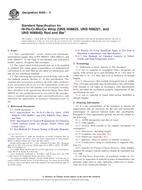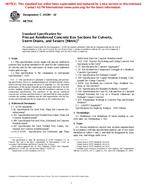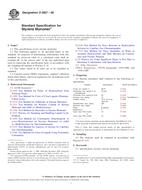1.1 This test method covers a procedure for determining relative complex permittivity (relative dielectric constant and loss index) and relative magnetic permeability of isotropic, reciprocal (nongyromagnetic) solid materials. If the material is nonmagnetic, this procedure may be used to measure permittivity only.
1.2 This measurement method is valid over a frequency range of approximately 1 MHz to 50 GHz. These limits are not exact and depend on the size of the specimen, the size and type of transmission line used as a specimen holder, and on the applicable frequency range of the network analyzer used to make measurements. The lower frequency is limited by the smallest measurable phase shift through a specimen, and the upper frequency limit is determined by the excitation of higher-order modes that invalidates the dominant-mode transmission line model. Any number of discrete measurement frequencies may be selected in this frequency range. To achieve maximum measurement accuracy, use of different transmission line sizes and types may be required. For example, use of a 7-mm diameter coaxial geometry can provide for measurements from 1 MHz to 18 GHz. However, air gaps that exist between the specimen and the transmission line’s conductors introduce errors that may necessitate the use of a larger diameter coaxial transmission line and a series of rectangular wave guides of different size to cover this frequency range.
1.3 The values stated in SI units are to be regarded as the standard. The values given in parentheses are for information only.
1.4 This standard does not purport to address all of the safety concerns, if any, associated with its use. It is the responsibility of the user of this standard to establish appropriate safety and health practices and determine the applicability of regulatory limitations prior to use.
Product Details
- Published:
- 03/10/2001
- Number of Pages:
- 15
- File Size:
- 1 file , 260 KB
- Redline File Size:
- 2 files , 450 KB


